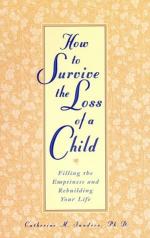|
This section contains 417 words (approx. 2 pages at 300 words per page) |

|
The right-to-die movement is often identified with euthanasia—the act of killing or permitting the death of hopelessly sick or injured individuals in a relatively painless way for reasons of mercy. In “passive” euthanasia patients are allowed to die, as in the case of removing life support from a comatose patient. Passive euthanasia is accepted medical practice in the United States, and patients may sign “living wills” indicating that they do not wish to be kept alive by artificial means. “Active” euthanasia, on the other hand, is illegal in all parts of the world. It is defined as the actual killing of a patient, often by means of lethal injection.
Modern right-to-die advocates are more likely to support physician-assisted suicide than active euthanasia, and they are careful to distinguish between the two. In physician-...
|
This section contains 417 words (approx. 2 pages at 300 words per page) |

|




